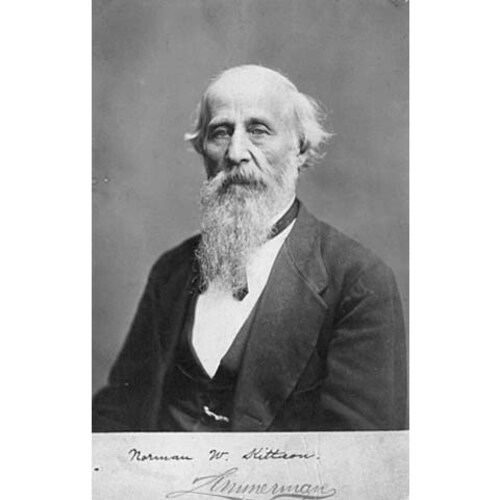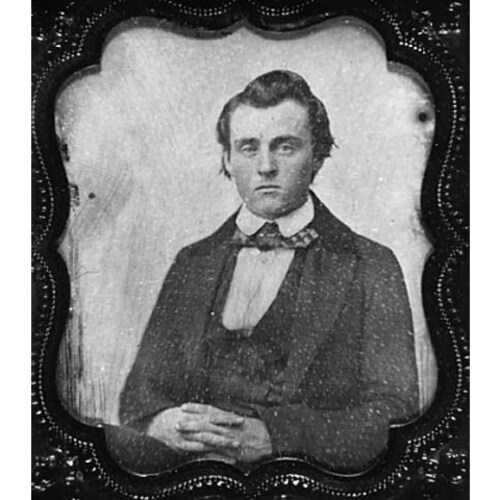![Description Norman Kittson Date circa 1880 Source Minnesota Historical Society visual resources collection, image 90265 [1] Author Charles Alfred Zimmerman (1844-1909) Permission (Reusing this file) Public domainPublic domainfalsefalse This image (or other media file) is in the public domain because its copyright has expired. This applies to Australia, the European Union and those countries with a copyright term of life of the author plus 70 years. You must also include a United States public domain tag to indicate why this work is in the public domain in the United States. Note that a few countries have copyright terms longer than 70 years: Mexico has 100 years, Colombia has 80 years, and Guatemala and Samoa have 75 years, Russia has 74 years for some authors. This image may not be in the public domain in these countries, which moreover do not implement the rule of the shorter Original title: Description Norman Kittson Date circa 1880 Source Minnesota Historical Society visual resources collection, image 90265 [1] Author Charles Alfred Zimmerman (1844-1909) Permission (Reusing this file) Public domainPublic domainfalsefalse This image (or other media file) is in the public domain because its copyright has expired. This applies to Australia, the European Union and those countries with a copyright term of life of the author plus 70 years. You must also include a United States public domain tag to indicate why this work is in the public domain in the United States. Note that a few countries have copyright terms longer than 70 years: Mexico has 100 years, Colombia has 80 years, and Guatemala and Samoa have 75 years, Russia has 74 years for some authors. This image may not be in the public domain in these countries, which moreover do not implement the rule of the shorter](/bioimages/w600.4802.jpg)
Source: Courtesy of Wikimedia Commons
KITTSON, NORMAN WOLFRED, fur-trader, merchant, steamboat owner, and entrepreneur; b. 5 March 1814 in Chambly, Lower Canada, son of George Kittson and Nancy Tucker; m. Élise Marion, a Métis of St Boniface (Man.); d. 10 May 1888 en route to St Paul, Minn.
Norman Wolfred Kittson was educated at the grammar school in William Henry (Sorel, Que.). He was drawn to the fur trade by the stories he heard from traders, including Alexander Henry*, the elder, who had been active among the Indians in the Saskatchewan country. Entering the American Fur Company in 1830 as an apprentice, Kittson was soon associated with Henry Hastings Sibley, one of the company’s senior clerks in the area that would become the state of Minnesota. In 1843, though he would maintain his connection with Sibley and the company for another decade, Kittson achieved a large degree of independence and made Pembina (N. Dak.) the headquarters of his own operations. Kittson soon found himself competing against the Hudson’s Bay Company for the furs in the Red River valley.
Kittson’s success at Pembina, 70 miles south of the Red River Settlement, represented a threat to the trading monopoly of the HBC in the Red River valley area, and enabled him to play a significant part in bringing free trade to the settlement in 1849. Of the free traders at Red River from whom he obtained furs, the most important were Andrew McDermot and James Sinclair*. Through his wife Kittson became strongly attached to the Métis people of the settlement and in the early 1850s he usually hired them as tripmen to load his Red River carts with furs and buffalo robes, drive them to St Paul, and return with supplies for himself at Pembina and for Red River.
Kittson was a member of the Minnesota Territorial Legislative Council for the Pembina district between 1852 and 1855. He moved from Pembina to St Paul in 1854, became one of the city’s influential businessmen, with large real estate holdings and investments, and in 1858–59 served as mayor of the city. A “sprightly, fine-looking man,” “elegantly dressed” and “genial in nature,” he became closely identified with St Paul’s metropolitan aspirations, and was committed to the development of the city’s northwest hinterland, which in his view included the Red River. In 1856 Kittson opened a general store in St Boniface, a sign of the reality of free trade and the interest of St Paul capital in the area. The following year he and other merchants shipped over $120,000 of furs from the Red River Settlement to St Paul. Although he sold his establishment at St Boniface in 1861, Kittson continued to import furs from the settlement and provide it with supplies.
The transportation system between St Paul and the Red River Settlement required much improvement, and in 1858–59, as a leading St Paul entrepreneur, Kittson was instrumental in opening steamboat service on the Red River. In the latter year, HBC Governor Sir George Simpson* described Kittson as “the most extensive and respectable of the American traders doing business at Red River.” Simpson’s successor, Alexander Grant Dallas, converted Kittson “from an opponent into an ally,” and in 1862, when the HBC had been using the St Paul route for freighting for a few years, appointed him shipping agent at St Paul and at Georgetown (Minn.), the head of navigation on the Red River. Kittson retained the agency for the remainder of the decade, and the HBC benefited from his extensive experience. He coordinated the importing of trade goods from England, and the exporting of furs by cart brigades between St Paul and Georgetown and on the company’s steamboat, the International, between Georgetown and the Red River Settlement. Red River carts were often used over the entire route because the water level on the Red River was frequently not high enough for steamboat travel.
In 1872, two years after the province of Manitoba was created, Kittson joined a competitor, James Jerome Hill of St Paul, in organizing a steamboat line, the Red River Transportation Company, in which he had invested $75,000 by 1873. The line, with Kittson as manager but run by Hill, had five steamboats. Its monopoly on the Red River during the 1870s, in the transport of immigrants and supplies to Winnipeg and the homesteads of southern Manitoba, made it an important factor in the development of the area.
Kittson’s last major venture was in 1879 when he was in poor health. With Hill, George Stephen* of the Bank of Montreal, and Donald Alexander Smith* of the HBC, he bought the St Paul and Pacific Railroad and reorganized it as the St Paul, Minneapolis and Manitoba Railway. It provided the first railway connection between St Boniface and St Paul. During a meeting with Stephen in Montreal in 1877, Kittson had expressed his confidence in the success of the railway: “The settlement of the Red River Valley, both in Minnesota and Manitoba, has been very rapid during the past two years, and the early development of that section, together with the increase of traffic from the Black Hills and the upper Missouri, will make this railway one of the very best paying roads in this country.” Kittson’s confidence was not misplaced, and by 1881, when he sold all of his stock in the railway, he was a wealthy man.
A busy transportation agent most of his life, Kittson died on 10 May 1888 in a lower berth on a Chicago and Northwestern train speeding through the night towards St Paul.
PAM, HBCA, A.12/10, 16 May, 21 June 1859; A.12/42, 1 July, 23 Aug. 1861; A.12/43, 28 May 1862; A.12/45, 24 Aug. 1869; D.9/ 1, 2 June 1867. Manitoba Daily Free Press, 11 May 1888. Nor’Wester, 15 March, 1 April 1861; 28 May 1862. DAB. A. C. Gluek, Minnesota and the manifest destiny of the Canadian northwest: a study in Canadian-American relations (Toronto, 1965). Albro Martini, James J. Hill and the opening of the northwest (New York, 1976). Morton, Manitoba (1967). C. W. Rife, “Norman W. Kittson, a fur-trader at Pembina,” Minnesota Hist. (St Paul, Minn.), 6 (1925): 225–52.
Cite This Article
Henry C. Klassen, “KITTSON, NORMAN WOLFRED,” in Dictionary of Canadian Biography, vol. 11, University of Toronto/Université Laval, 2003–, accessed April 4, 2025, https://www.biographi.ca/en/bio/kittson_norman_wolfred_11E.html.
The citation above shows the format for footnotes and endnotes according to the Chicago manual of style (16th edition). Information to be used in other citation formats:
| Permalink: | https://www.biographi.ca/en/bio/kittson_norman_wolfred_11E.html |
| Author of Article: | Henry C. Klassen |
| Title of Article: | KITTSON, NORMAN WOLFRED |
| Publication Name: | Dictionary of Canadian Biography, vol. 11 |
| Publisher: | University of Toronto/Université Laval |
| Year of revision: | 1982 |
| Access Date: | April 4, 2025 |




